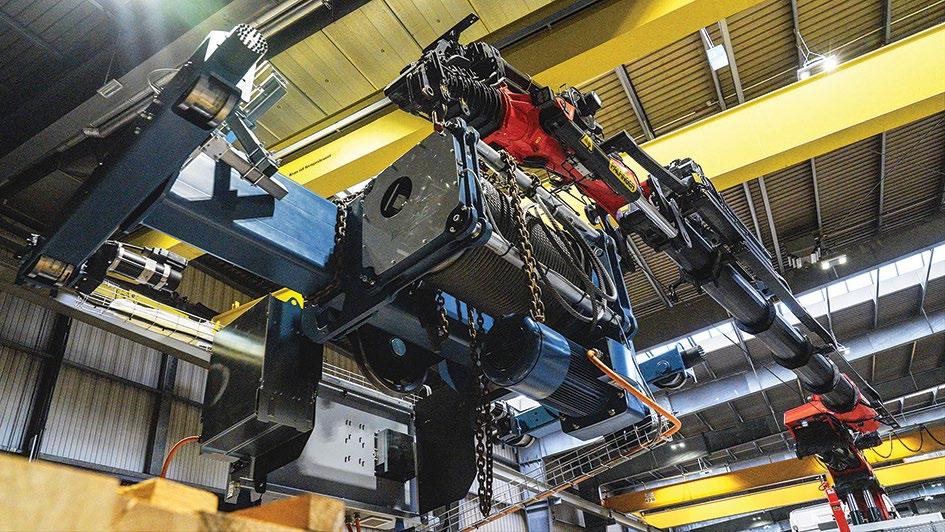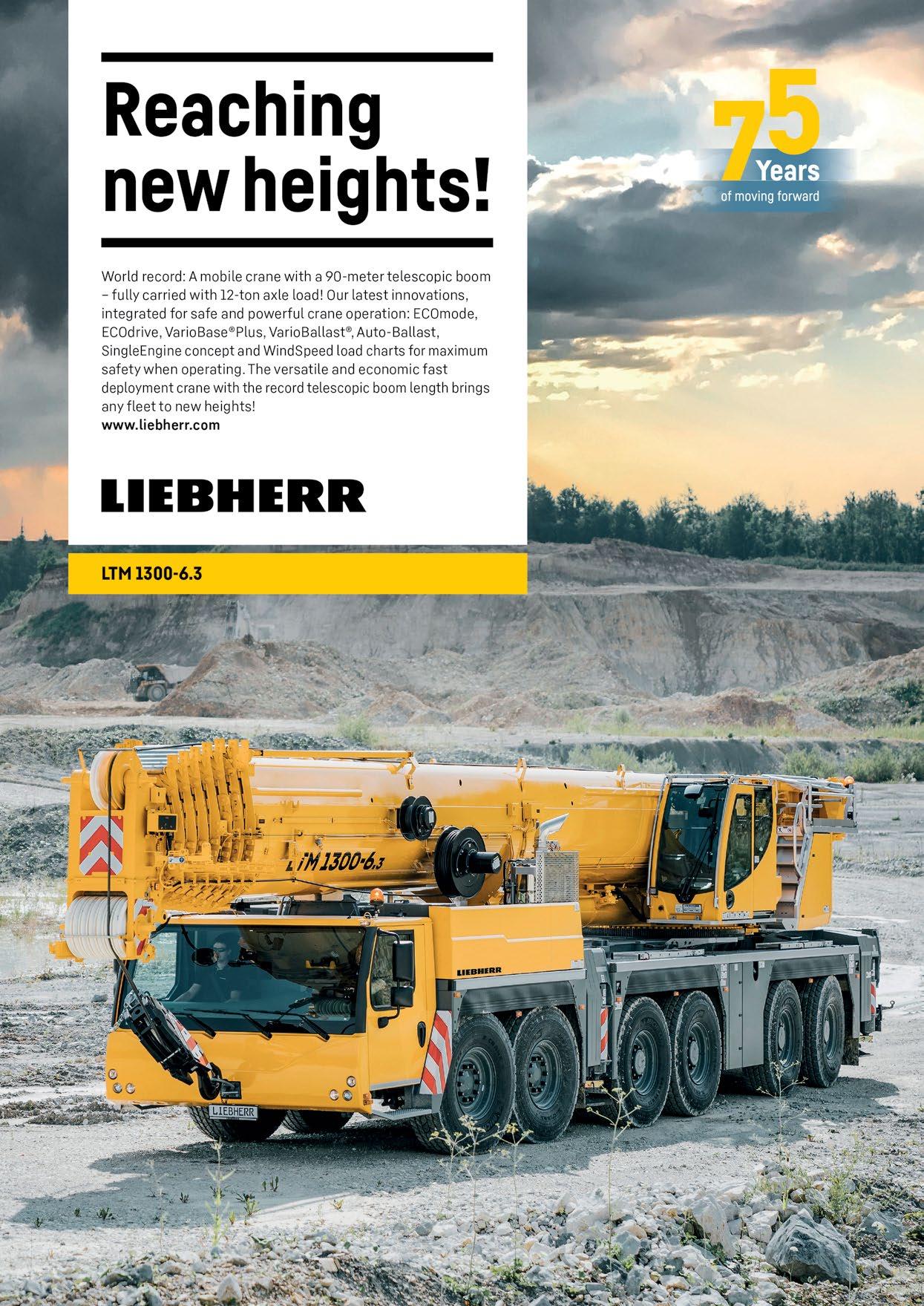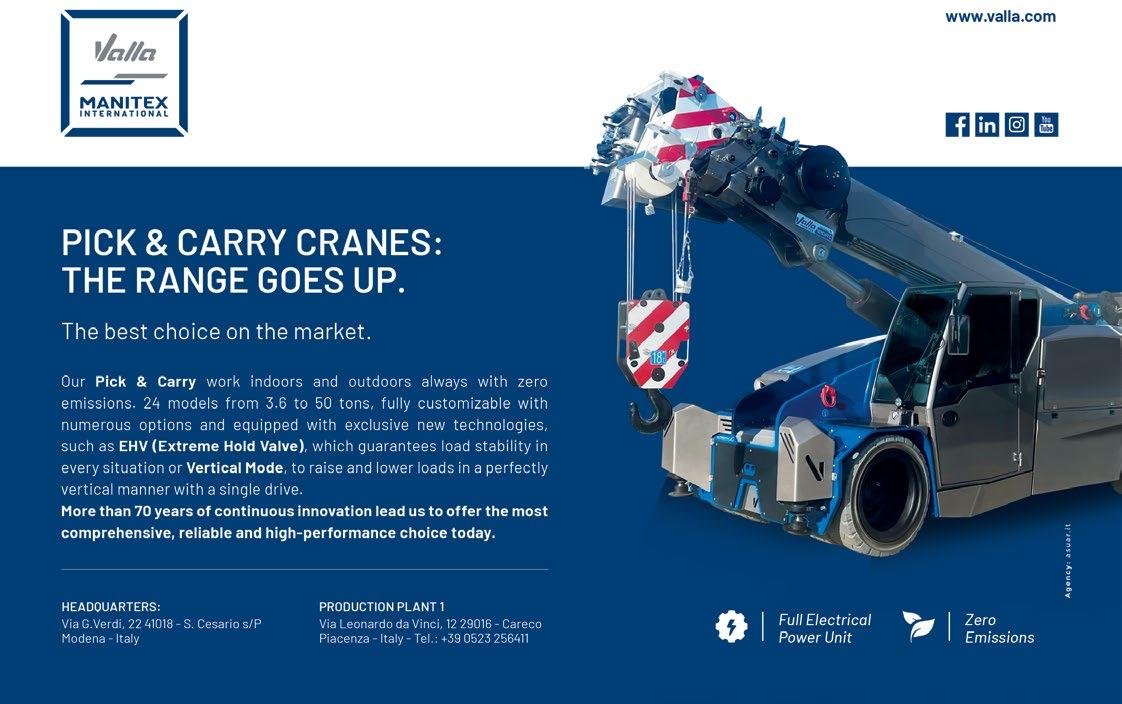
4 minute read
A tricky but rapid gantry crane replacement
A tricky but rapid gantry crane replacement
Dismantling and replacing a 30 year old gantry crane at a factory in Gresten, Lower Austria, had to be carried out as quickly as possible so as not to disrupt Wesel Profile’s production. The company has been based in the Mostviertel region for 350 years and is a world leader in the manufacture of special steel and stainless steel profiles. However, when the ageing crane had to be replaced, the company stressed that the production process could not be disrupted or delayed any longer than was absolutely necessary.
Local lifting and transport company KranMitterhauser based in nearby Zell an der Pram was called in to carry out the lifting work required to install the new replacement crane - a 15 tonne Demag. It selected its 125 tonne/metre Palfinger PK 165.002 TEC 7 crane which is mounted on a Scania 8x4 chassis. The crane was designed to be optimised for the 32 tonne chassis, complete with all of its equipment on board, including jib and winch.

The PK 165.002 TEC 7 has a maximum tip height of 42 metres thanks to two additional manual sections, on top of the nine section main boom and eight section jib. It has a maximum capacity of 8.2 tonnes on the jib and a useful 1.12 tonnes at 36 metre radius, while the jib luffs to 25 degrees above the horizontal main boom.
Franz Josef Loibl, a long serving employee of Welser Profile and head of maintenance said: "Our production facilities are quite cramped with very little free space for a crane to move around. The set up and the height also caused difficulties so finding the right crane for the task has clearly been difficult."


The operation was spread over two days. On the first day the old crane was fully dismantled so that by the morning of day two the new crane could be erected and assembled. The crane operator entrusted with the job was Palfinger operator Stefan Haas who has worked for Mitterhauser for 13 years.
He says that he is a big fan of his previous crane - a Palfinger PK 78.002-SH - however he acknowledges that it could not complete with the TEC 7 crane in terms of control and precision, not to mention its many convenient functions.
“The P-Fold function is one of the most practical features - the semi-automatic folding and unfolding of the crane with only one lever via the radio control, is fantastic,” says Haas. “Also, the RTC - Rope Tension Control - is one of the best inventions, as with the jobs I carry out, the winch is usually in use all day long. It can remain in position with this function, and it communicates perfectly with P-Fold system. Both functions really help with setting up the crane as well as closing up after the job is done. It really helps with the daily work routines. Also setting up and levelling the crane with the remote control makes working much easier.”

Manoeuvring the loader crane into its lifting positions was tricky due to space limitations, but once set up the PK 165.002 TEC 7 was more than able to carry out the lifts efficiently. The main component of the new crane weighed around five tonnes, which the PK was able to handle with plenty in reserve.
“The TEC 7 crane is particularly suitable for special operations such as the assembly of indoor gantry/suspension cranes, where there is little space to manoeuvre and the contract period is short. On the previous job I used it to lift in a power station located on the side of a mountain,” said Haas.
The assembly of the new indoor crane was completed successfully within four hours on day two allowing production to restart on schedule. ■






